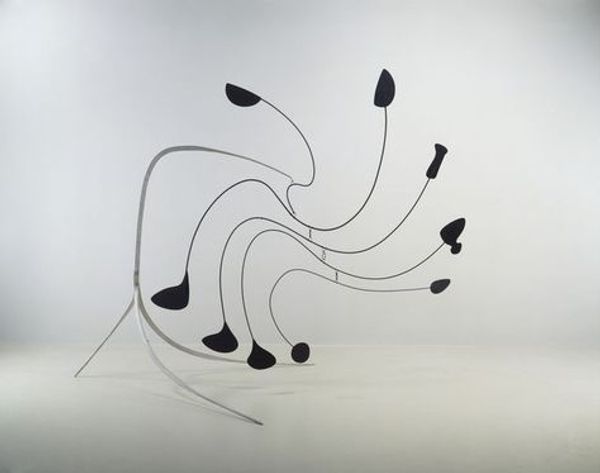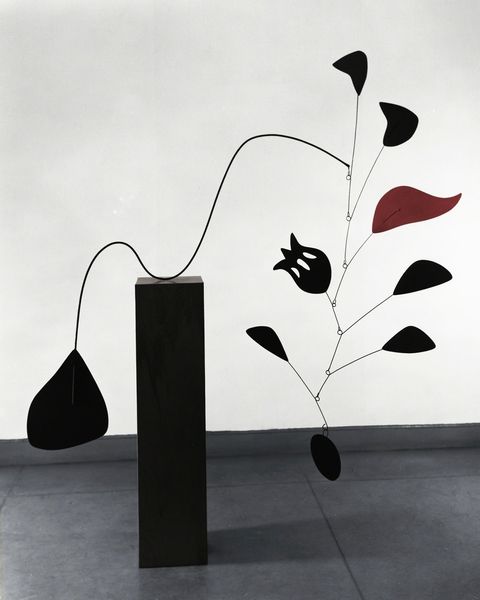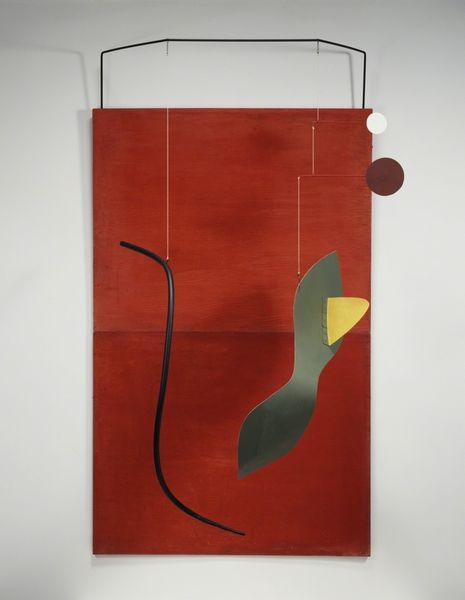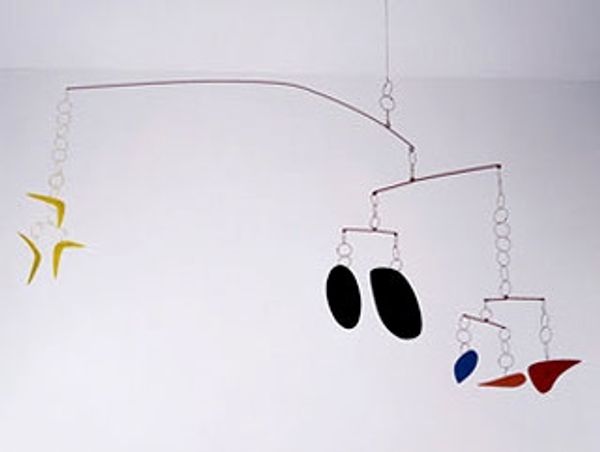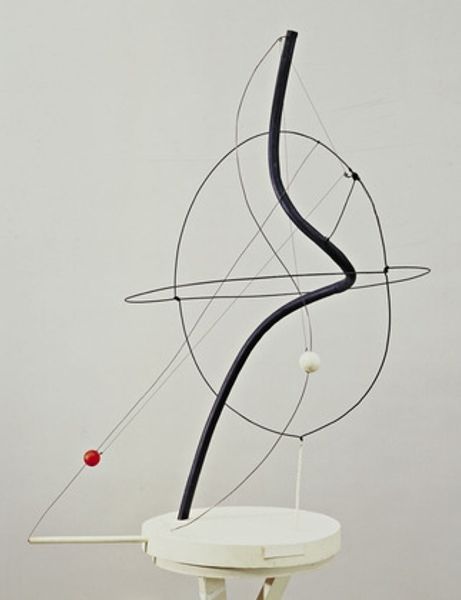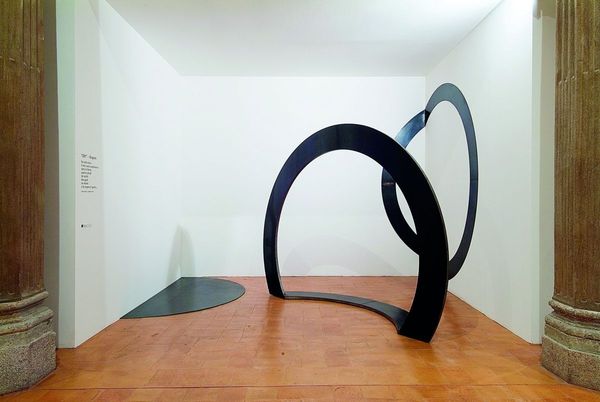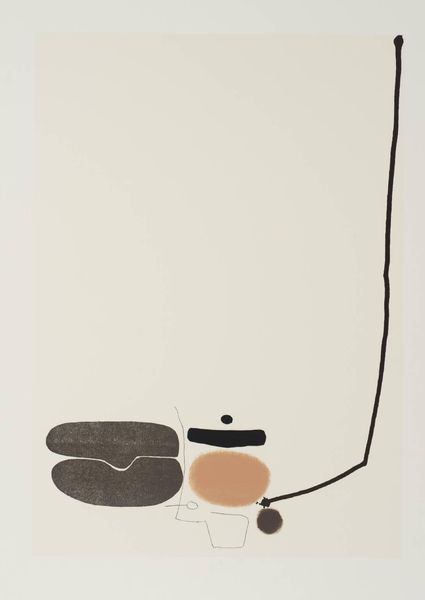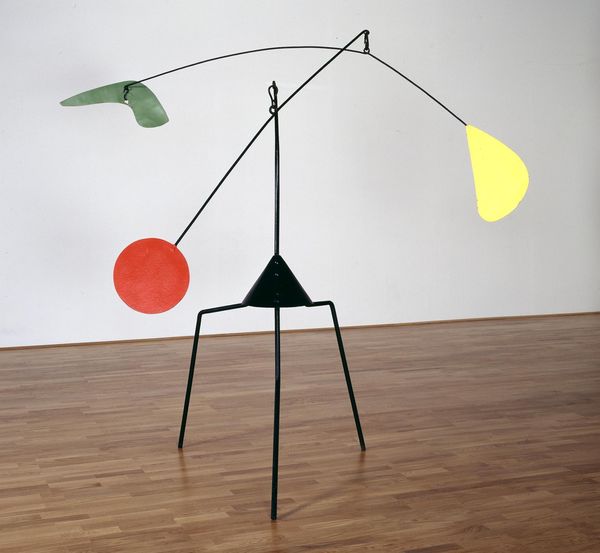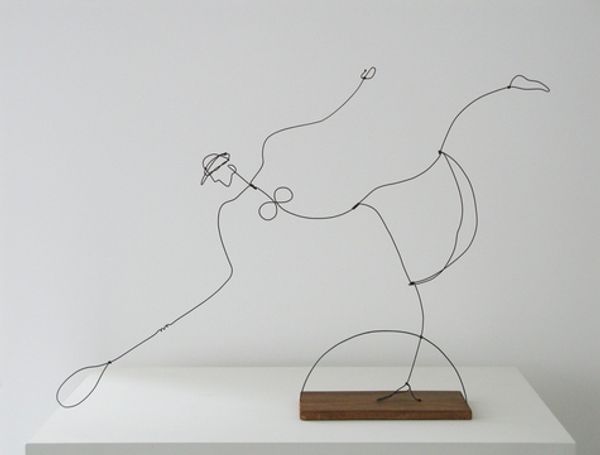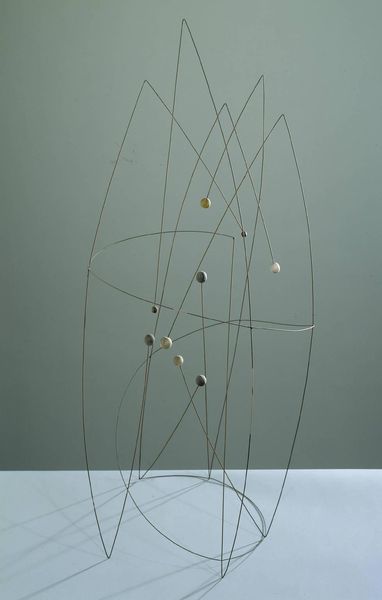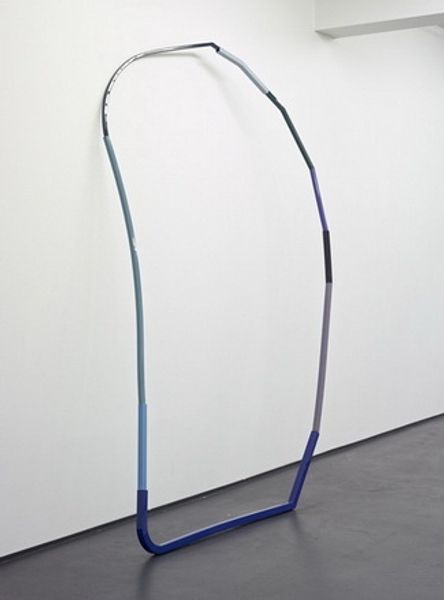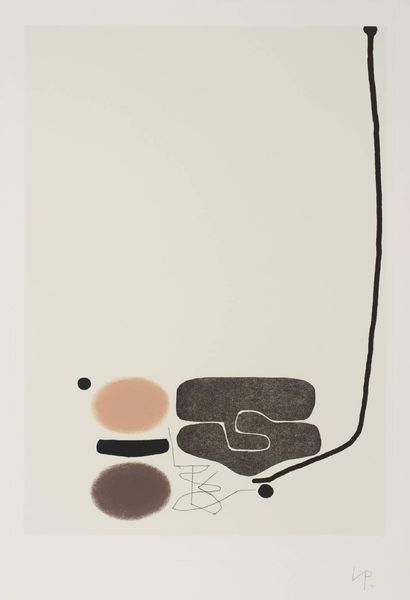
metal, sculpture, mobile
#
metal
#
constructivism
#
form
#
geometric
#
sculpture
#
mobile
#
abstraction
#
line
Copyright: Alexander Calder,Fair Use
Editor: We're looking at Alexander Calder's "Four Leaves and Three Petals," created in 1939. It’s a striking mobile crafted from metal. It feels both playful and incredibly structured to me. What do you see in this piece? Curator: Immediately, I am struck by the dynamism inherent in its construction. Observe the delicate balance achieved through the careful distribution of weight and the linear articulation of form. Note how the geometric elements—the "leaves" and "petals"—are suspended, creating a visual dialogue between positive and negative space. The piece compels us to analyze its internal mechanics, the play of tension and equilibrium. Editor: It's interesting how you focus on the balance. I was thinking more about how it evokes a sense of nature. Is that something Calder was aiming for, or is it purely about the forms themselves? Curator: The question of intent is secondary to the artwork’s internal logic. The resemblance to organic forms is, perhaps, coincidental. Consider the arrangement of colours: primary hues appear as deliberate points of emphasis, punctuating the otherwise monochrome structure. It is within these formal relationships, not in representational aspirations, that the meaning resides. How does that affect your interpretation? Editor: That makes me think about the title. It guides us toward seeing "leaves" and "petals", but it may lead us astray from appreciating the structure itself. I wonder if Calder gave any hints for interpretations other than botanical. Curator: Titles are frequently misleading, sometimes ironically so. To unlock its value, one has to rely on semiotics and formalism, viewing this piece as a study in form and material and internal arrangement rather than descriptive realism. Editor: That's a really interesting way to look at it. I came in thinking about nature, but now I see how important the structural composition is. Curator: Exactly, moving forward always analyse first what you can objectively deduce based on formal choices.
Comments
No comments
Be the first to comment and join the conversation on the ultimate creative platform.
